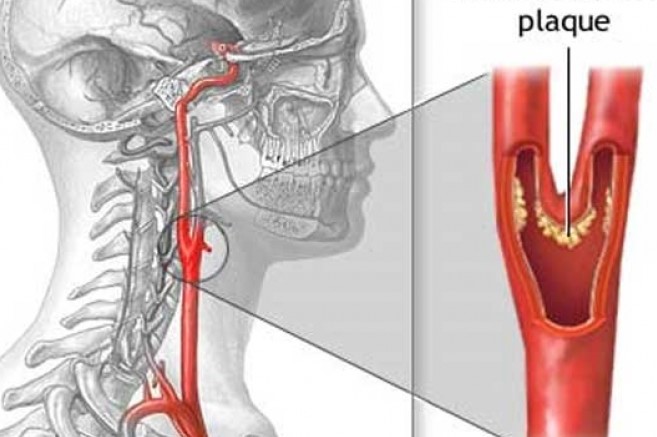
Carotid artery stenosis: what it is, how it is diagnosed and how to intervene
Carotid artery stenosis – why are they a danger to consider? The right and left carotids, together with the vertebral arteries, carry blood to the brain and run in the neck
Atherosclerosis in the carotids can lead to stenosis (narrowing) in these vessels, which can be asymptomatic or cause the following disorders
- TIA i.e. transient ischaemic attacks (less than 24 hours);
- RIND, i.e. ischaemic attacks lasting up to three days;
- STROKE (or ICTUS), i.e. ischaemias that leave a lasting after-effect.
Brain ischemia, depending on the areas affected, can give:
- sudden loss of vision or visual field in either eye (fleeting amaurosis);
- sudden loss of strength or sensation in one arm, leg or half of the face;
- difficulty articulating words (dysarthria) with possible amnesia;
- severe and sudden dizziness;
- fainting spells (lipotimia).
The diagnosis of carotid (or vertebral) stenosis is made with an ecodoppler, and the diagnosis is almost always completed with a CT scan of the brain and an angiography of the supraaortic trunks (alternatively with a magnetic angiography).
Blood pressure values and cardiac rhythm should also be studied (Holter, echocardiogram, blood pressure monitoring) to highlight any arrhythmias that may cause, albeit with different mechanisms, the same symptoms as carotid stenosis.
Of fundamental importance in reducing the ischaemic risk is anti-platelet therapy with drugs (aspirin, ticlopidine?).
However, if asymptomatic stenoses of more than 70-80 %, or stenoses even below this percentage but symptomatic, are confirmed, treatment of the carotid artery is required.
In these cases, therapy for carotid artery stenosis can be of two types:
- TEA (thromboendoarteriectomy), i.e. a surgical ‘cleaning’ of the carotid artery, which can also be performed under loco-regional anaesthesia;
- PTA (angioplasty), i.e. a balloon dilatation of the narrow artery, which can be performed under local anaesthesia.
The operation involves some risk, but it is statistically established that it is riskier to keep a carotid stenosis than to treat it.
The type of intervention depends on the angiographic picture and the extent and localisation of the stenosis.
Read Also:
Emergency Live Even More…Live: Download The New Free App Of Your Newspaper For IOS And Android
Atrial Fibrillation: Causes, Symptoms And Treatment
Cardiac Rhythm Disturbance Emergencies: The Experience Of US Rescuers
What Are Congenital Heart Defects?
Prenatal Pathologies, Congenital Heart Defects: Pulmonary Atresia
Management Of Cardiac Arrest Emergencies
Palpitations: What Causes Them And What To Do
Scimitar Syndrome: Causes, Symptoms, Diagnosis, Treatment, Prognosis And Mortality
Carotid Stenosis: What Is It And What Are The Symptoms?
Cervical Stenosis: Symptoms, Causes, Diagnosis And Treatment
Coronary Angioplasty, What To Do Post-Operatively?
Heart Patients And Heat: Cardiologist’s Advice For A Safe Summer
US EMS Rescuers To Be Assisted By Paediatricians Through Virtual Reality (VR)
Silent Heart Attack: What Is Silent Myocardial Infarction And What Does It Entail?
Mitral Valve Diseases, The Advantages Of Mitral Valve Repair Surgery
Coronary Angioplasty, How Is The Procedure Performed?
Congenital Pulmonary Valve Stenosis And Ebstein’s Anomaly


